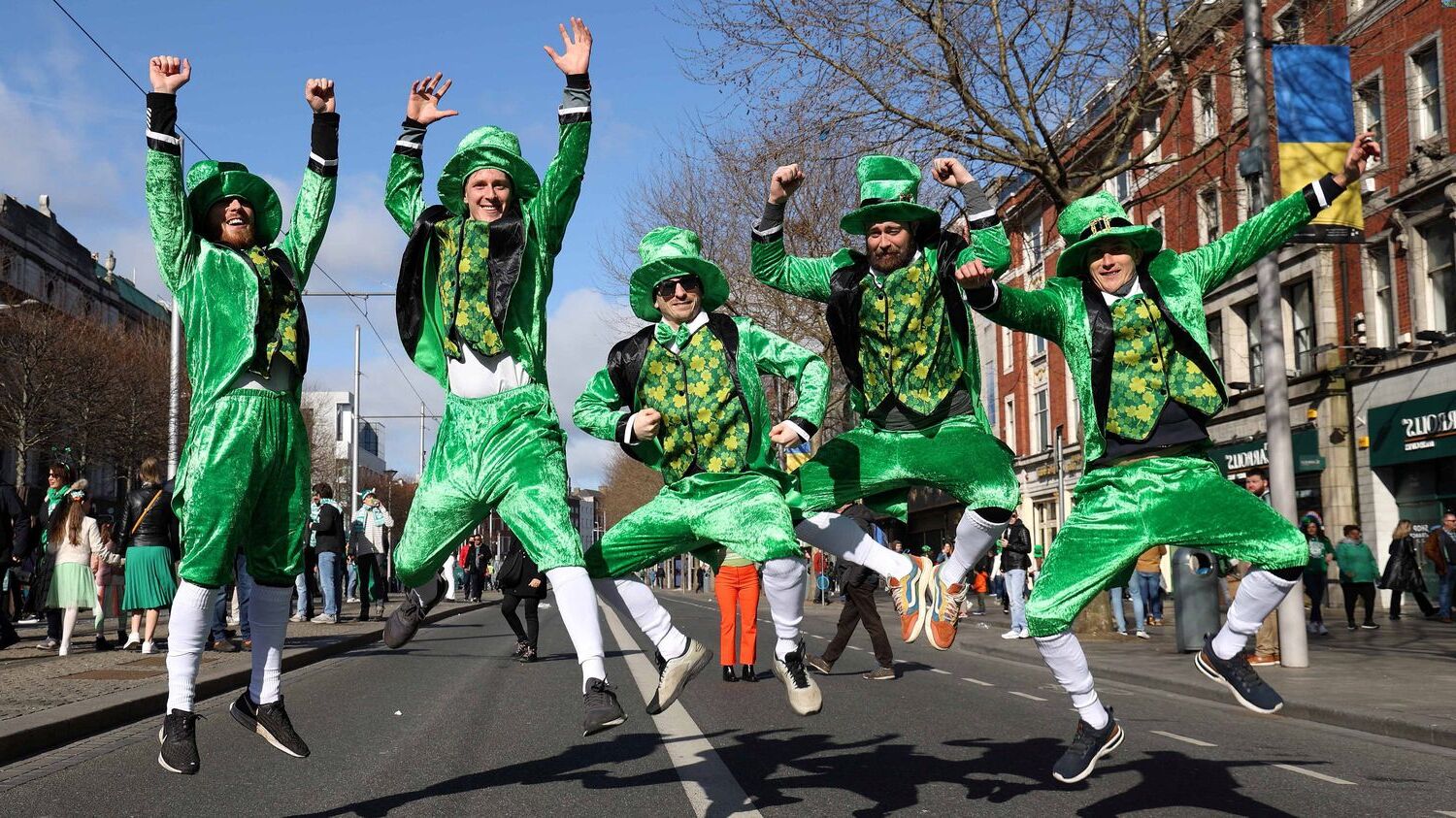
St. Patrick's Day is celebrated every year on March 17th, honoring the patron saint of Ireland. But what do you really know about this festive day? Did you know that St. Patrick wasn't actually Irish? He was born in Britain and brought to Ireland as a slave. Over time, he became a beloved figure for spreading Christianity across the island. Ever wondered why people wear green? It's because of Ireland's lush landscape and the association with shamrocks, which St. Patrick used to explain the Holy Trinity. From parades to pinching those not in green, this holiday is packed with traditions and fun facts. Ready to learn more? Let's dive into 45 fascinating tidbits about St. Patrick's Day!
Key Takeaways:
- St. Patrick's Day is a global celebration honoring the patron saint of Ireland, with fun traditions, myths, and historical impact that have influenced cultures worldwide.
- From shamrocks to leprechauns, St. Patrick's Day is filled with symbols and traditions that reflect the rich heritage and history of the Irish people, celebrated with parades and festive cheer.
Origins of St. Patrick's Day
St. Patrick's Day, celebrated on March 17th, honors the patron saint of Ireland. The day is filled with parades, green attire, and festive cheer. Let's explore some intriguing facts about this beloved holiday.
- St. Patrick was not Irish. He was born in Roman Britain.
- At 16, he was kidnapped by Irish pirates and taken to Ireland as a slave.
- After six years, he escaped back to Britain but later returned to Ireland as a missionary.
- March 17th marks the date of St. Patrick's death in 461 AD.
- The first St. Patrick's Day parade took place in New York City in 1762.
Symbols and Traditions
St. Patrick's Day is rich with symbols and traditions that have evolved over centuries. From shamrocks to leprechauns, each element has a unique story.
- The shamrock, a three-leaf clover, was used by St. Patrick to explain the Holy Trinity.
- Green became associated with the holiday in the 18th century.
- Leprechauns, originally depicted as wearing red, are now commonly seen in green.
- The color blue was initially linked to St. Patrick.
- Corned beef and cabbage is a traditional meal for the day, especially in the United States.
Global Celebrations
St. Patrick's Day isn't just celebrated in Ireland. Countries around the world join in the festivities, each adding their own twist.
- Chicago dyes its river green every year for the celebration.
- In Japan, the holiday is marked with parades and Irish music.
- Montserrat, a Caribbean island, has a public holiday for St. Patrick's Day.
- Buenos Aires hosts one of the largest St. Patrick's Day parties in South America.
- Sydney Opera House is illuminated in green to honor the day.
Fun and Quirky Facts
Beyond the well-known traditions, there are many fun and quirky facts about St. Patrick's Day that might surprise you.
- St. Patrick's Day was a dry holiday in Ireland until the 1970s.
- The shortest St. Patrick's Day parade takes place in Dripsey, Ireland, spanning just 100 yards.
- More than 13 million pints of Guinness are consumed worldwide on March 17th.
- St. Patrick's Day is the fourth most popular drinking day in the United States.
- The phrase "Drowning the Shamrock" refers to a tradition of placing a shamrock in a glass of whiskey before drinking it.
Historical Impact
St. Patrick's Day has a deep historical impact, influencing culture and traditions far beyond Ireland's borders.
- St. Patrick is credited with driving snakes out of Ireland, though this is likely a metaphor for eradicating pagan practices.
- The first St. Patrick's Day parade in Ireland was held in Waterford in 1903.
- The holiday was first celebrated in the United States by Irish soldiers serving in the British army.
- St. Patrick's Day became an official public holiday in Ireland in 1903.
- The Irish government began promoting the holiday as a tourist attraction in the mid-1990s.
Modern-Day Celebrations
Today, St. Patrick's Day is a global phenomenon, celebrated with various modern twists and activities.
- Many cities host "green" events, such as eco-friendly parades and festivals.
- Virtual celebrations have become popular, especially during the COVID-19 pandemic.
- Irish pubs around the world see a significant increase in business on March 17th.
- Schools and workplaces often hold themed events and dress-up days.
- Social media platforms are flooded with St. Patrick's Day posts and hashtags.
Myths and Legends
St. Patrick's Day is surrounded by myths and legends that add to its mystique and charm.
- One legend claims St. Patrick used a walking stick that grew into a tree.
- Another myth suggests he raised people from the dead.
- Some believe he gave a sermon from a hilltop that drove all the snakes into the sea.
- The legend of the pot of gold at the end of the rainbow is tied to leprechauns.
- St. Patrick is said to have had a vision that led him to return to Ireland.
Cultural Significance
The cultural significance of St. Patrick's Day extends beyond the festivities, reflecting the rich heritage and history of the Irish people.
- The holiday celebrates Irish culture and heritage worldwide.
- It serves as a reminder of the Irish diaspora and their contributions globally.
- Many people use the day to explore their Irish ancestry.
- Irish music and dance are central to the celebrations.
- The holiday fosters a sense of community and pride among Irish people.
Interesting Tidbits
Here are some more interesting tidbits about St. Patrick's Day that you might not know.
- The Irish flag's green represents Catholics, orange represents Protestants, and white symbolizes peace between them.
- St. Patrick's Day is also celebrated by many non-Irish people who enjoy the festivities.
- The largest St. Patrick's Day parade in Europe takes place in Dublin.
- The holiday has inspired numerous films, books, and songs.
- Many landmarks worldwide, including the Eiffel Tower and the Great Wall of China, have been lit up in green for St. Patrick's Day.
The Heart of St. Patrick's Day
St. Patrick's Day isn't just about wearing green and enjoying parades. It's a celebration of Irish culture, history, and the legacy of St. Patrick himself. From the legend of driving out snakes to the significance of the shamrock, each fact adds a layer to this vibrant holiday. Whether you're toasting with a pint of Guinness or learning about the origins of the holiday, there's always something new to discover. Embrace the traditions, enjoy the festivities, and remember the rich history behind the day. St. Patrick's Day is a reminder of the power of heritage and the joy of coming together. So next March 17th, celebrate with a deeper appreciation for the stories and traditions that make this day special. Cheers to St. Patrick and the spirit of Ireland!
Frequently Asked Questions
Was this page helpful?
Our commitment to delivering trustworthy and engaging content is at the heart of what we do. Each fact on our site is contributed by real users like you, bringing a wealth of diverse insights and information. To ensure the highest standards of accuracy and reliability, our dedicated editors meticulously review each submission. This process guarantees that the facts we share are not only fascinating but also credible. Trust in our commitment to quality and authenticity as you explore and learn with us.


